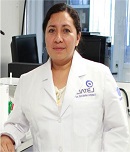
S M Contreras-Ramos
CIATEJ, Mexico
Title: Removal of oil hydrocarbons using the grass Panicum máximum and a bacterial consortium in contaminated soil
Biography
Biography: S M Contreras-Ramos
Abstract
The phytoremediation is a bioremediation technology used for the contaminants removal in soil and plants of tropical areas which has showed their potential with oil hydrocarbons. Species of grass belonging to Panicum genus has been found in oil contaminated soil. In this study, the aim was evaluating the removal of oil hydrocarbons from soil using the grass Panicum máximum alone or combined with a bacterial remover consortium. Grass and oil contaminated soil were collected from a closed oil extraction field and greenhouse experiment was established with consortium bacterial (B), grass (G) and their combination (G+B) on soil-cow manure-agrolite (1.8:0.1:0.1 w/w) in sterilized and not sterilized treatments during 112 days. A control (natural attenuation) without treatment was established in same conditions. Bacterial consortium was selected and mixed to growth as consortium after encapsulated with liposome in a permeable matrix of sustained release. The height, number of leaves, total hydrocarbon concentration (TPH) was recorded at 0, 28, 56 and 112 days, and grass biomass (root and steam) was determined at the end. TPH was determined by GC-MS. The treatment with only grass has a significant growth after 28 days up to end of the experiment, presented significantly higher root biomass than other treatments. The higher oil hydrocarbons removal was observed in the treatment of bacterial consortium (85%) followed by combined G+B (80%) and grass (77%) than natural attenuation (15%). The bioaugmentation with bacterial potentialized the oil hydrocarbons removal and helped the phytoremediation using the grass Panicum máximum.

